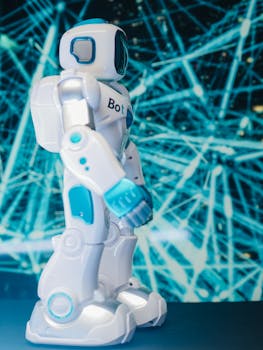In today’s rapidly evolving business landscape, staying competitive often means embracing cutting-edge technologies. Among these, automation and humanoid robots, data science, AI in business, AI software, and speech recognition stand out as transformative forces. These innovations are not just buzzwords; they’re practical tools that can streamline operations, enhance customer experiences, and drive strategic decision-making.
The Rise of Automation and Humanoid Robots
Automation has been revolutionizing industries for decades, but recent advancements in humanoid robots are taking it to new heights. These robots, designed to mimic human actions, can perform tasks that were previously impossible for machines. For instance, Boston Dynamics’ Atlas robot showcases remarkable agility and balance, demonstrating the potential of humanoid robots in various sectors.
Applications in Business
- Manufacturing: Humanoid robots can handle complex assembly tasks, improving efficiency and reducing errors.
- Healthcare: Robots like Moxi by Diligent Robotics assist with non-clinical tasks, allowing healthcare professionals to focus on patient care.
- Customer Service: Robots equipped with AI software can provide personalized assistance in retail and hospitality settings.
Moreover, these robots can work alongside humans, augmenting their capabilities rather than replacing them. This collaborative approach is key to successful automation implementation.
The Power of Data Science in Business
Data science is the backbone of modern business intelligence. By analyzing vast amounts of data, businesses can uncover insights that drive strategic decisions. Companies like Google and Amazon use advanced data science techniques to personalize user experiences and optimize operations.
Practical Tips for Implementing Data Science
- Identify Key Metrics: Determine what data points are crucial for your business goals.
- Invest in the Right Tools: Use AI software and machine learning platforms to process and analyze data efficiently.
- Build a Data-Driven Culture: Encourage all departments to use data insights in their decision-making processes.
For example, Netflix uses data science to recommend shows based on user behavior, significantly enhancing viewer satisfaction and retention. Similarly, AI in business can predict market trends, optimize supply chains, and even forecast customer needs.
The Role of Speech Recognition
Speech recognition technology has made significant strides, enabling machines to understand and respond to human language. This technology is integral to virtual assistants like Apple’s Siri and Amazon’s Alexa, which have become ubiquitous in both personal and professional settings.
Applications Beyond Virtual Assistants
- Customer Support: Speech recognition can power chatbots that handle customer inquiries, providing 24/7 support.
- Accessibility: It makes technology more accessible to individuals with disabilities, enhancing inclusivity.
- Automation: In industrial settings, speech recognition can control machinery hands-free, improving safety and efficiency.
For instance, Google’s speech recognition technology has achieved a word error rate of just 4.9%, making it nearly as accurate as human transcriptionists. This level of precision is crucial for applications in healthcare, where accurate medical dictation can save lives.
Integrating AI Software into Business Operations
AI software is the engine that drives many of these technological advancements. From predictive analytics to natural language processing, AI can automate routine tasks, freeing up human resources for more strategic work.
Key Areas of AI Integration
- Marketing: AI can analyze customer data to create targeted marketing campaigns, increasing engagement and conversion rates.
- Finance: AI-driven algorithms can detect fraudulent transactions in real-time, enhancing security.
- Human Resources: AI can streamline recruitment processes by screening resumes and conducting initial interviews.
Companies like IBM use AI software to develop solutions that help businesses across various industries. For example, IBM’s Watson can analyze unstructured data, providing insights that would be impossible for humans to uncover manually.
The Future of Work
As these technologies continue to evolve, the nature of work is changing. Automation and humanoid robots are taking over repetitive tasks, while data science and AI in business are providing deeper insights and more informed decision-making.
Speech recognition is making interactions with technology more natural and intuitive. Together, these advancements are creating a future where humans and machines work together more effectively than ever before.
The Road Forward
Embracing automation, humanoid robots, data science, AI in business, AI software, and speech recognition is not just about staying competitive; it’s about thriving in a rapidly changing world. By integrating these technologies into your operations, you can enhance efficiency, improve customer experiences, and drive innovation.
So, are you ready to take the next step? Start by identifying areas where automation and AI can add value to your business. Invest in the right tools and technologies, and foster a culture that embraces continuous learning and adaptation. The future is here, and it’s powered by intelligent machines.
